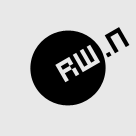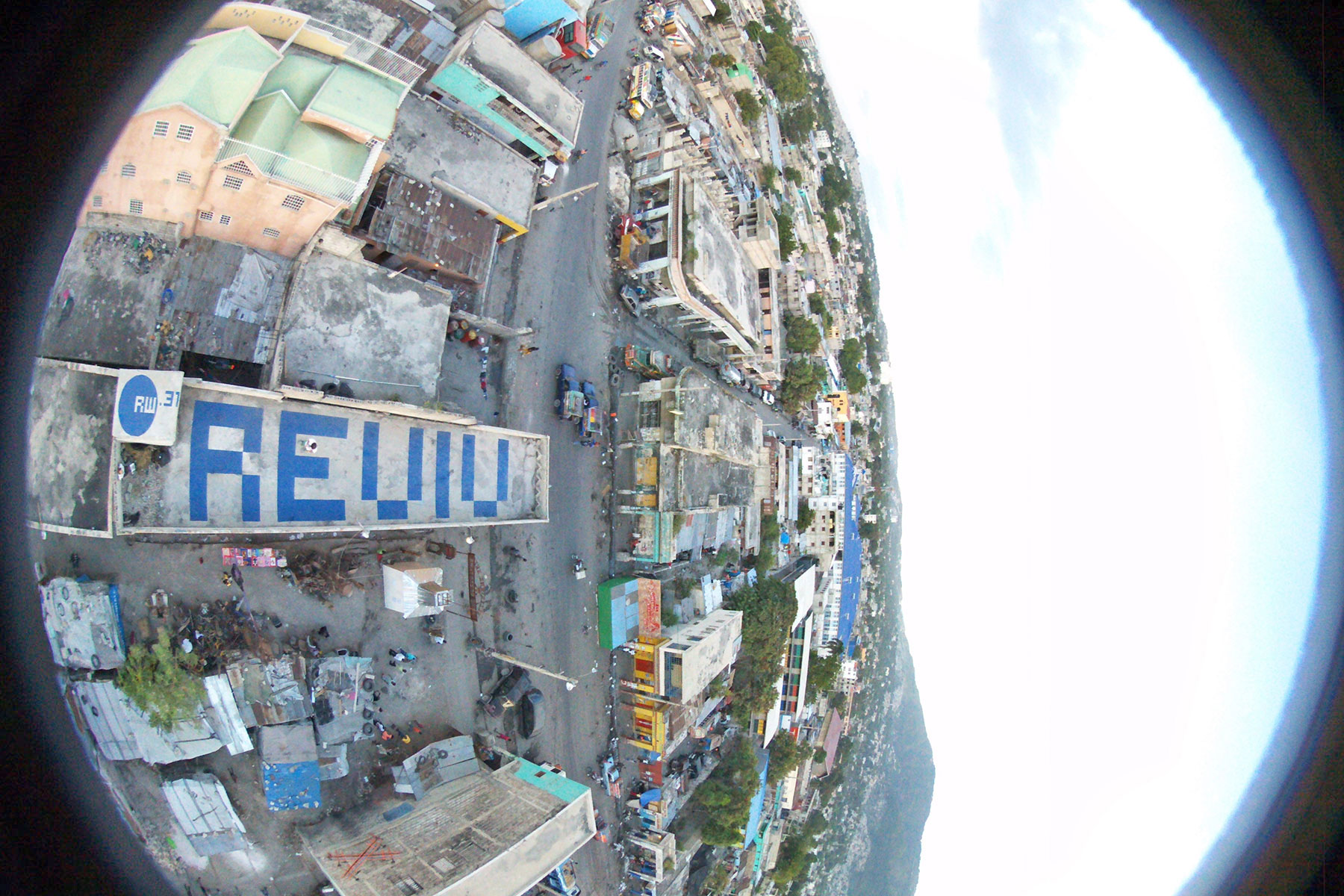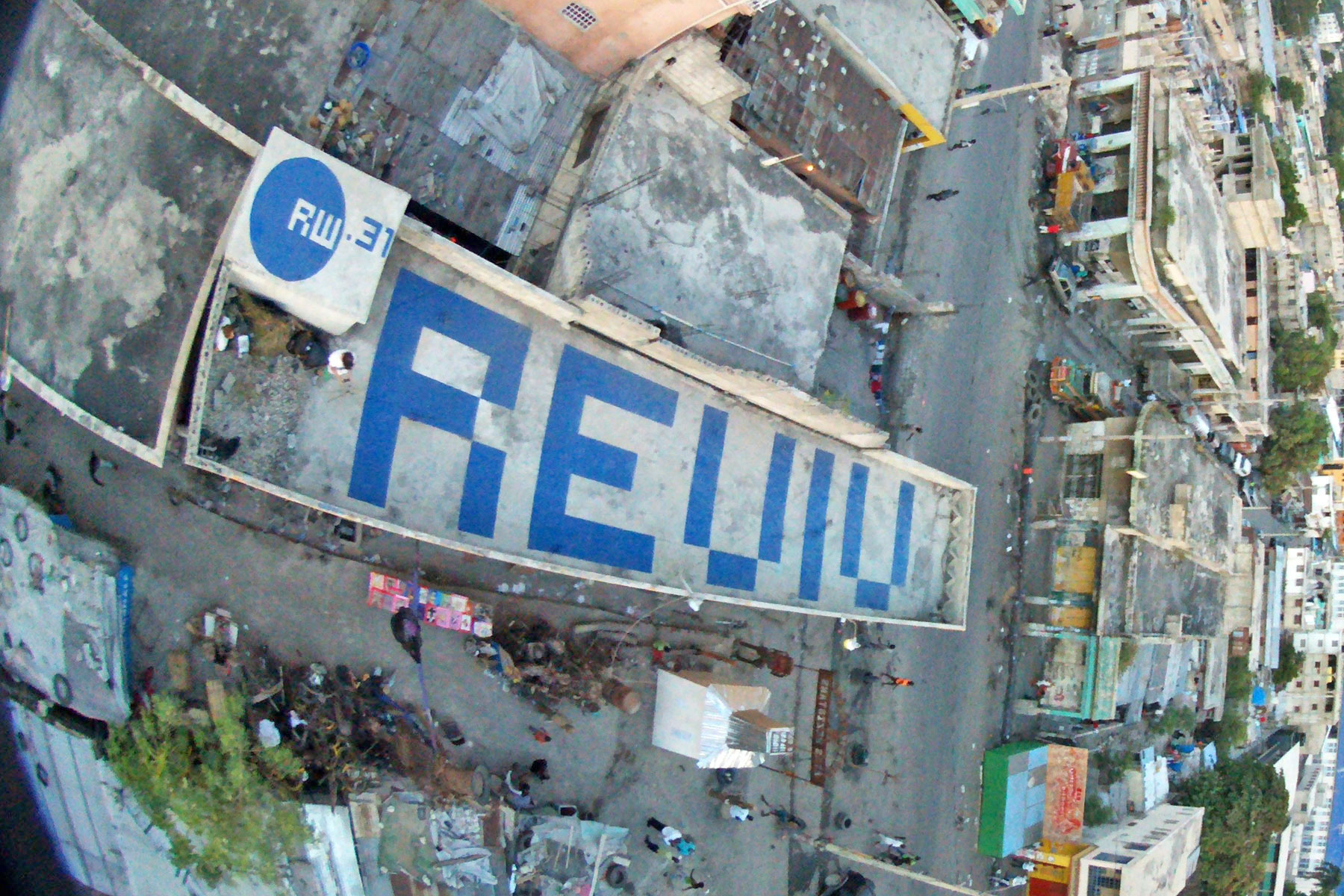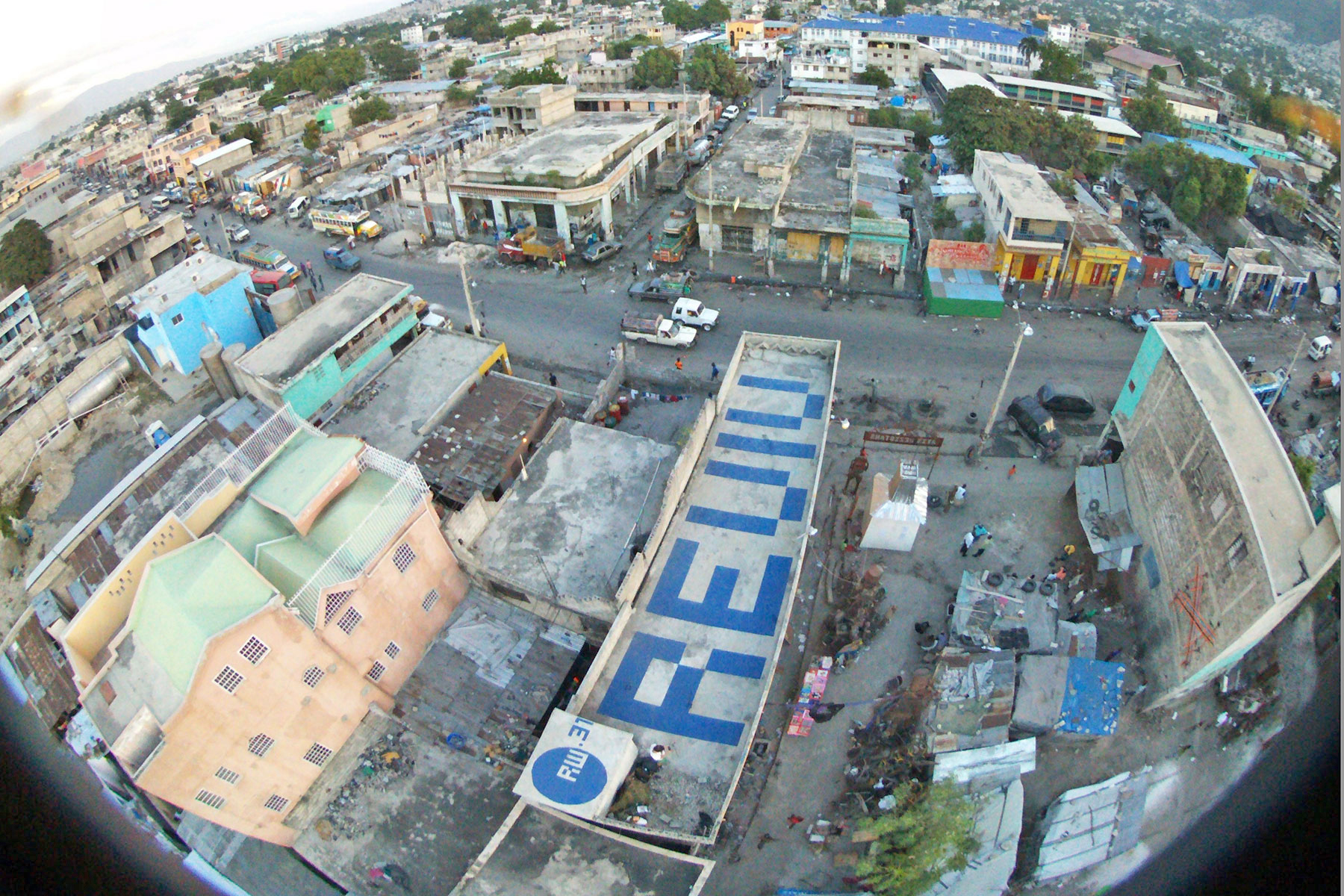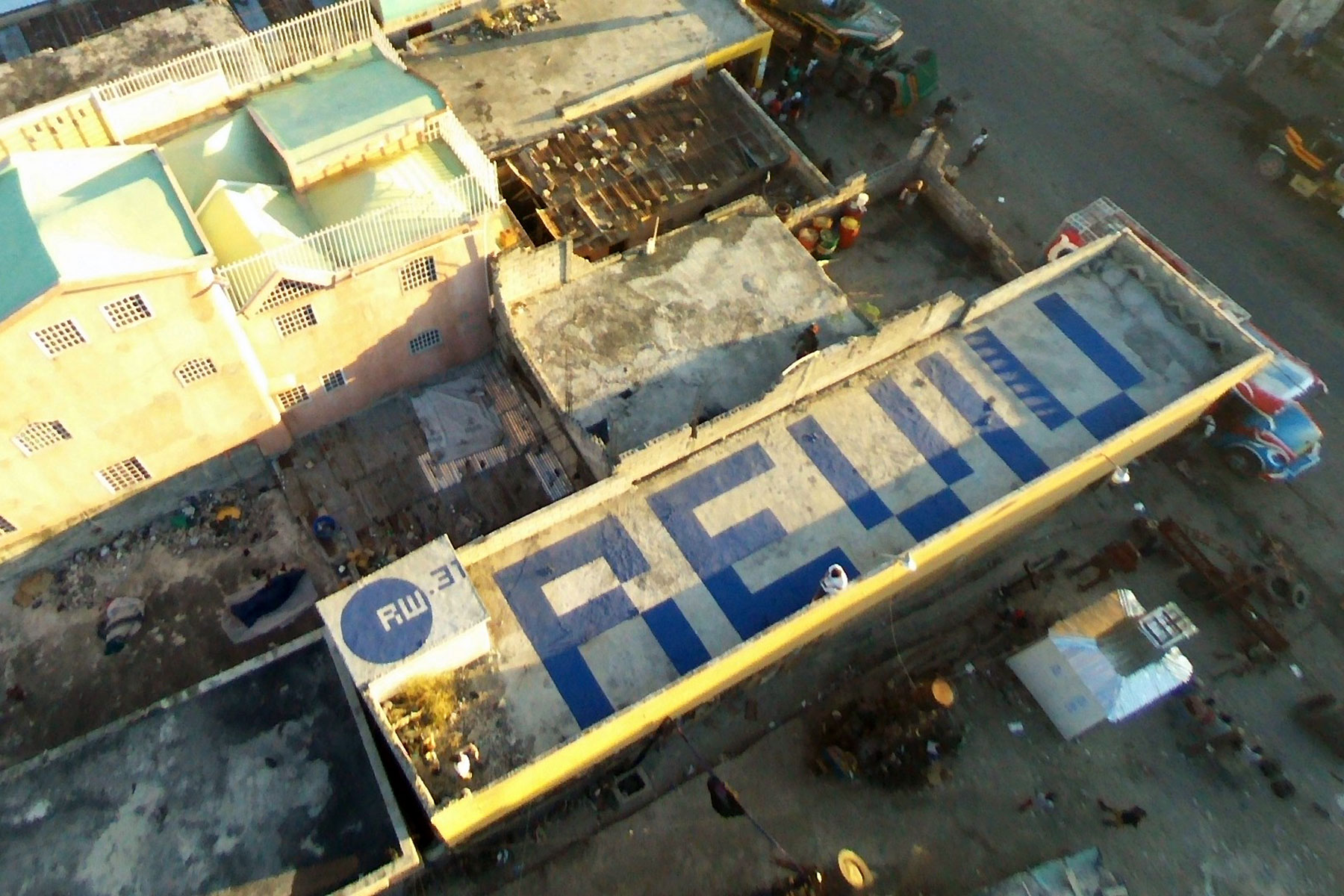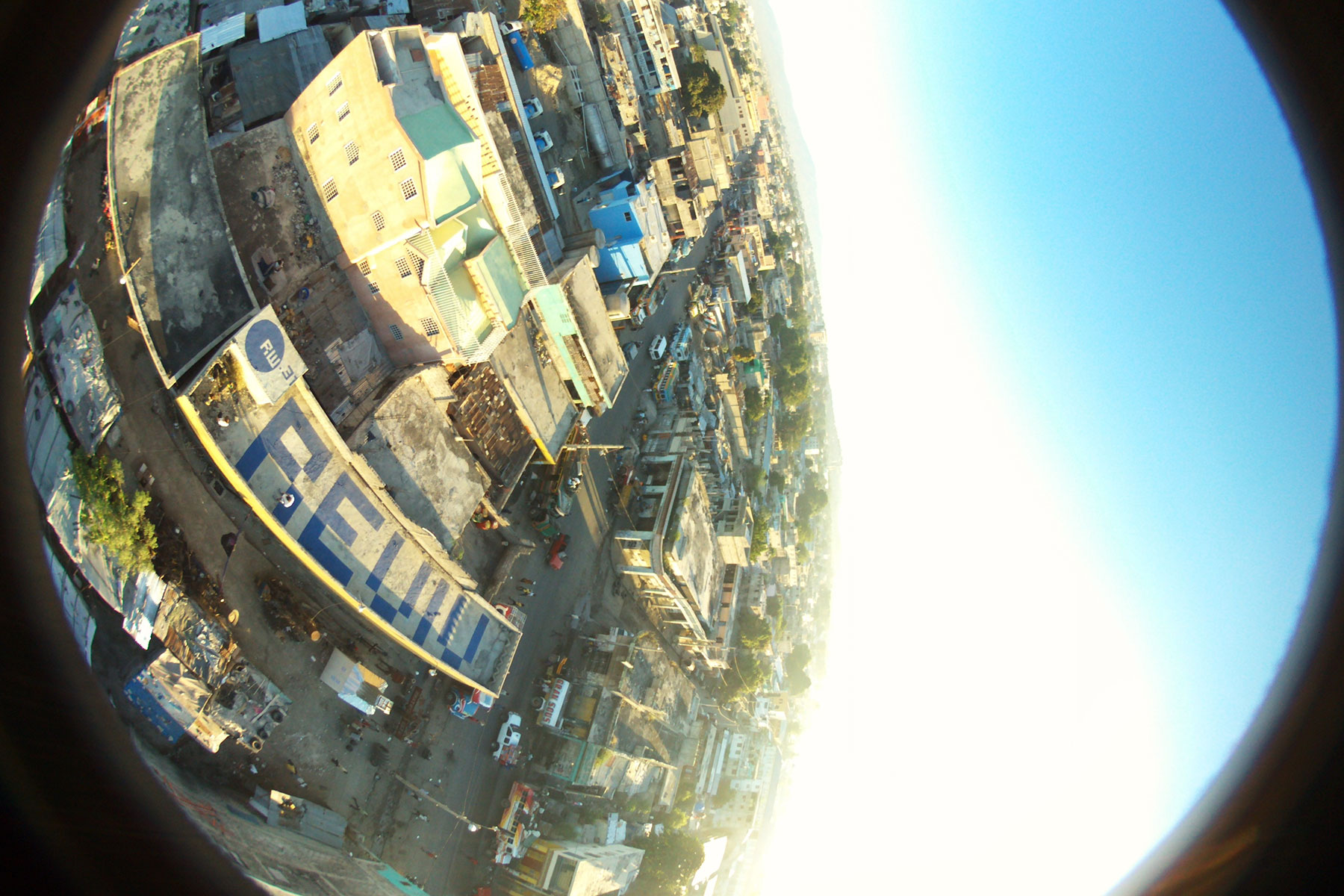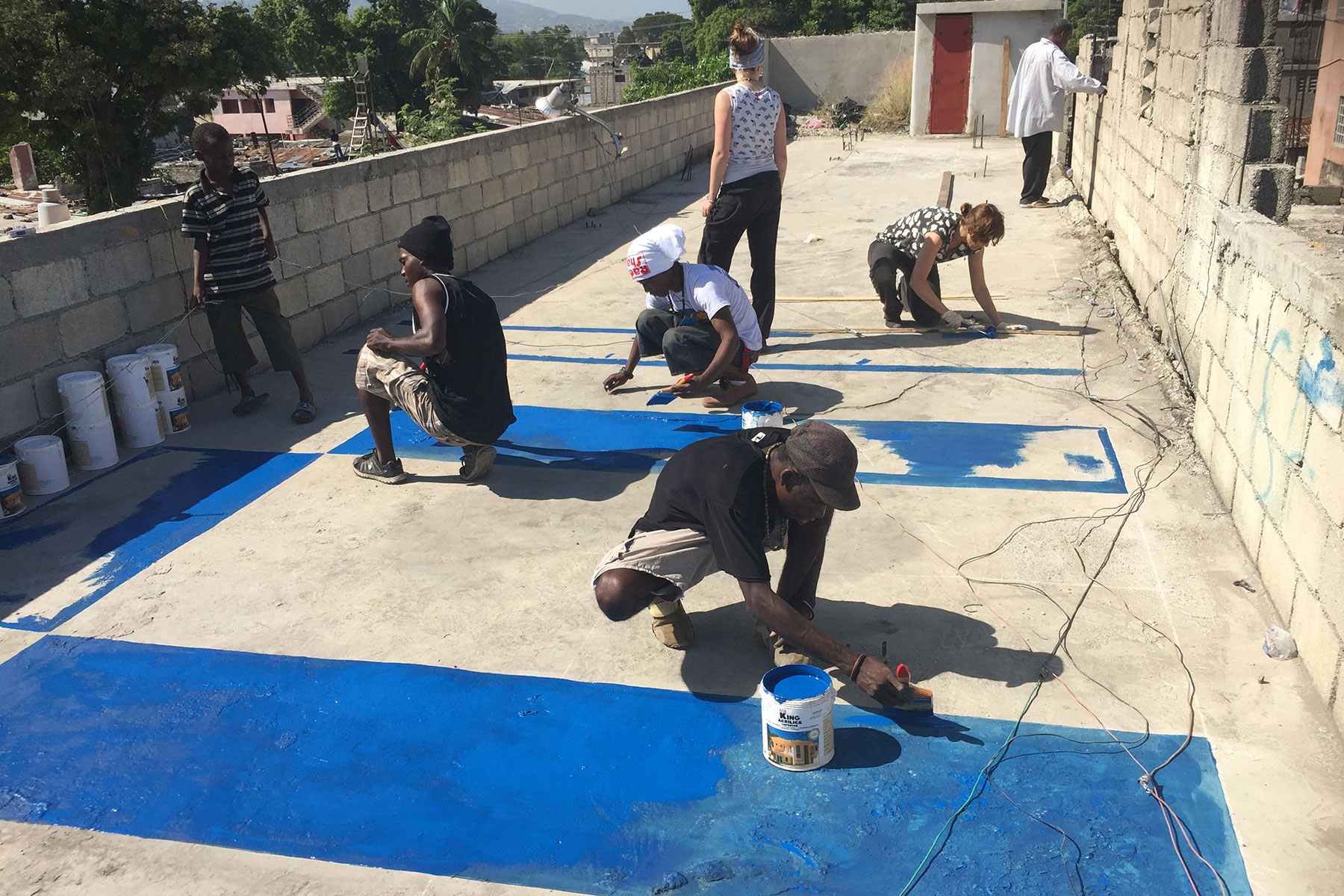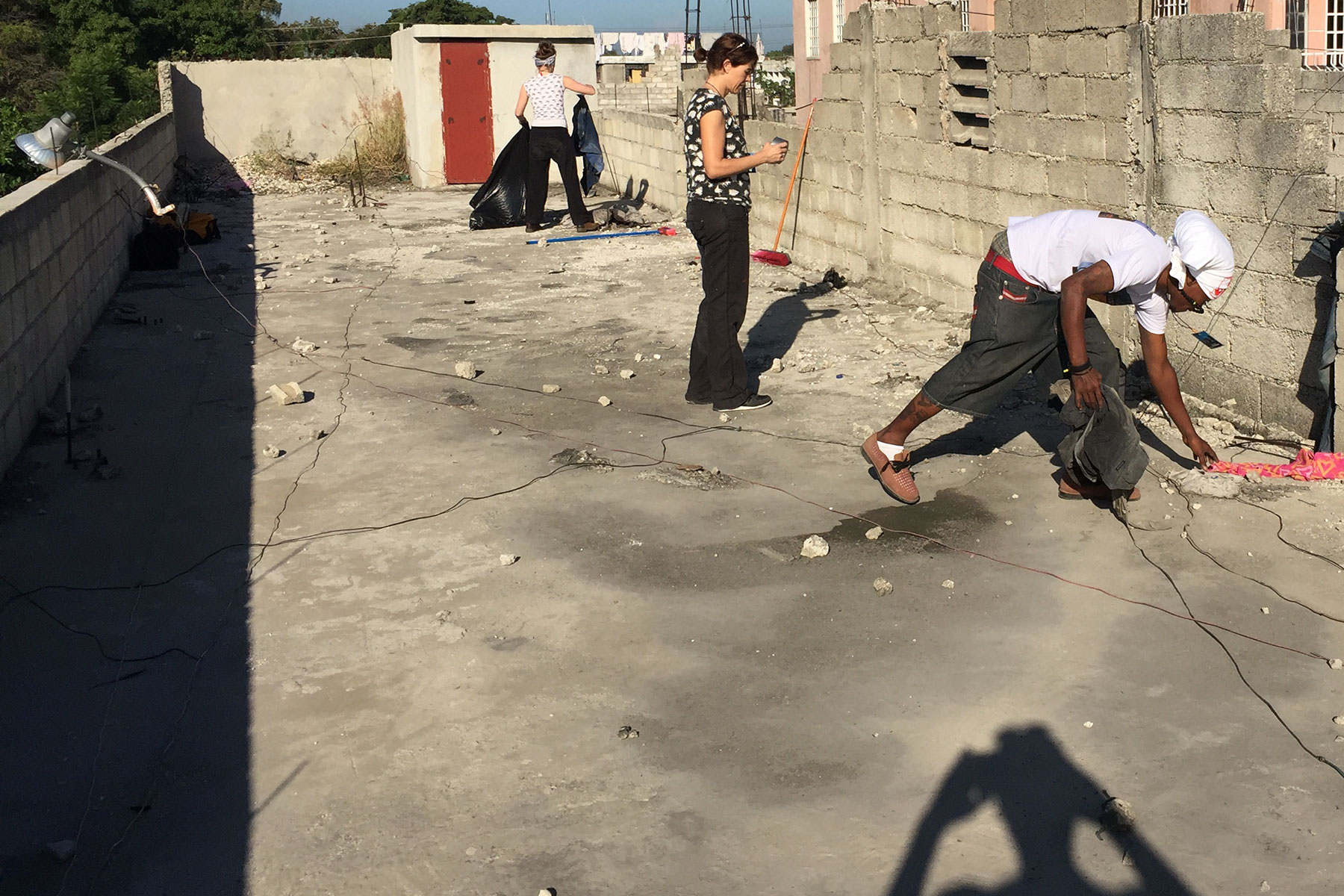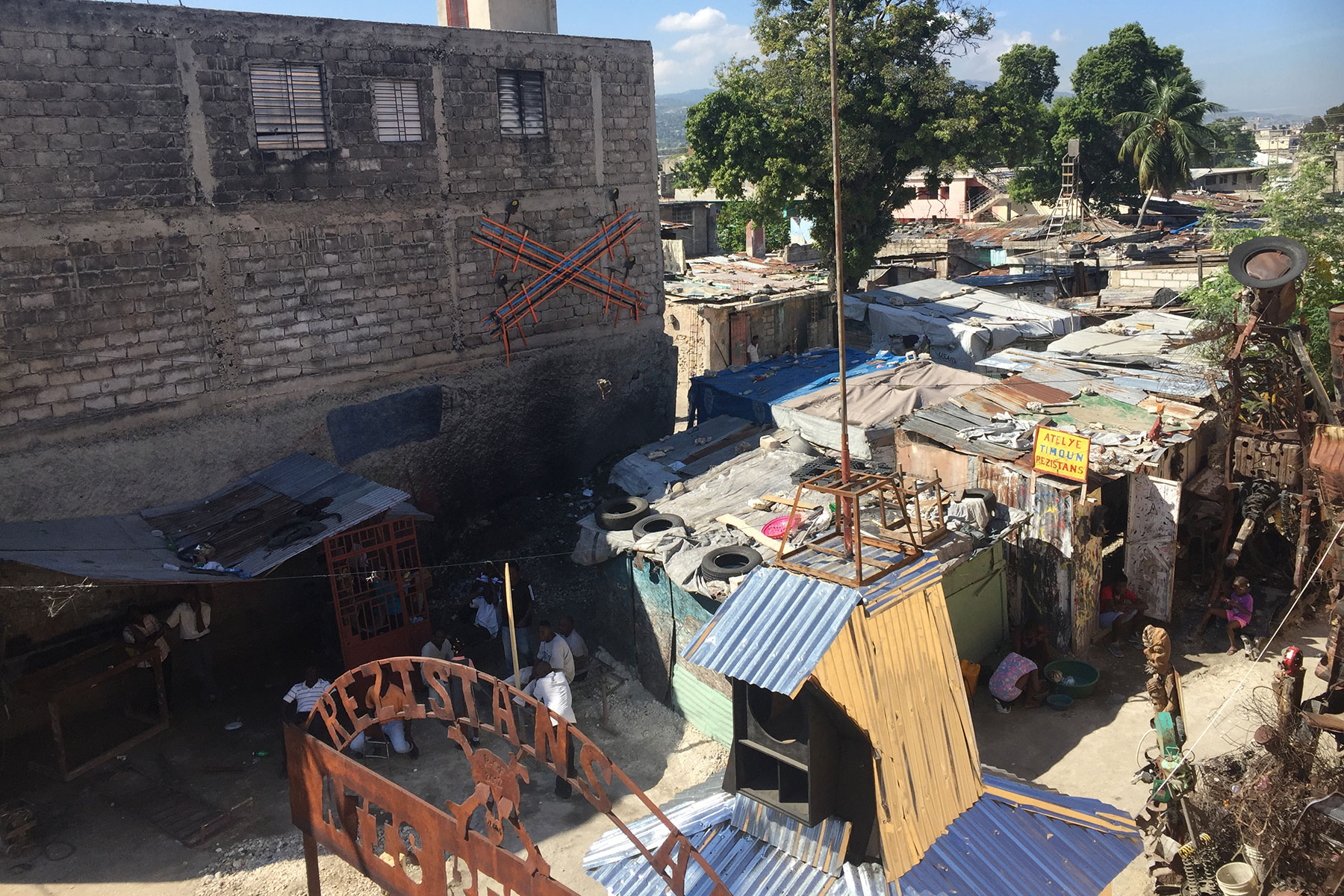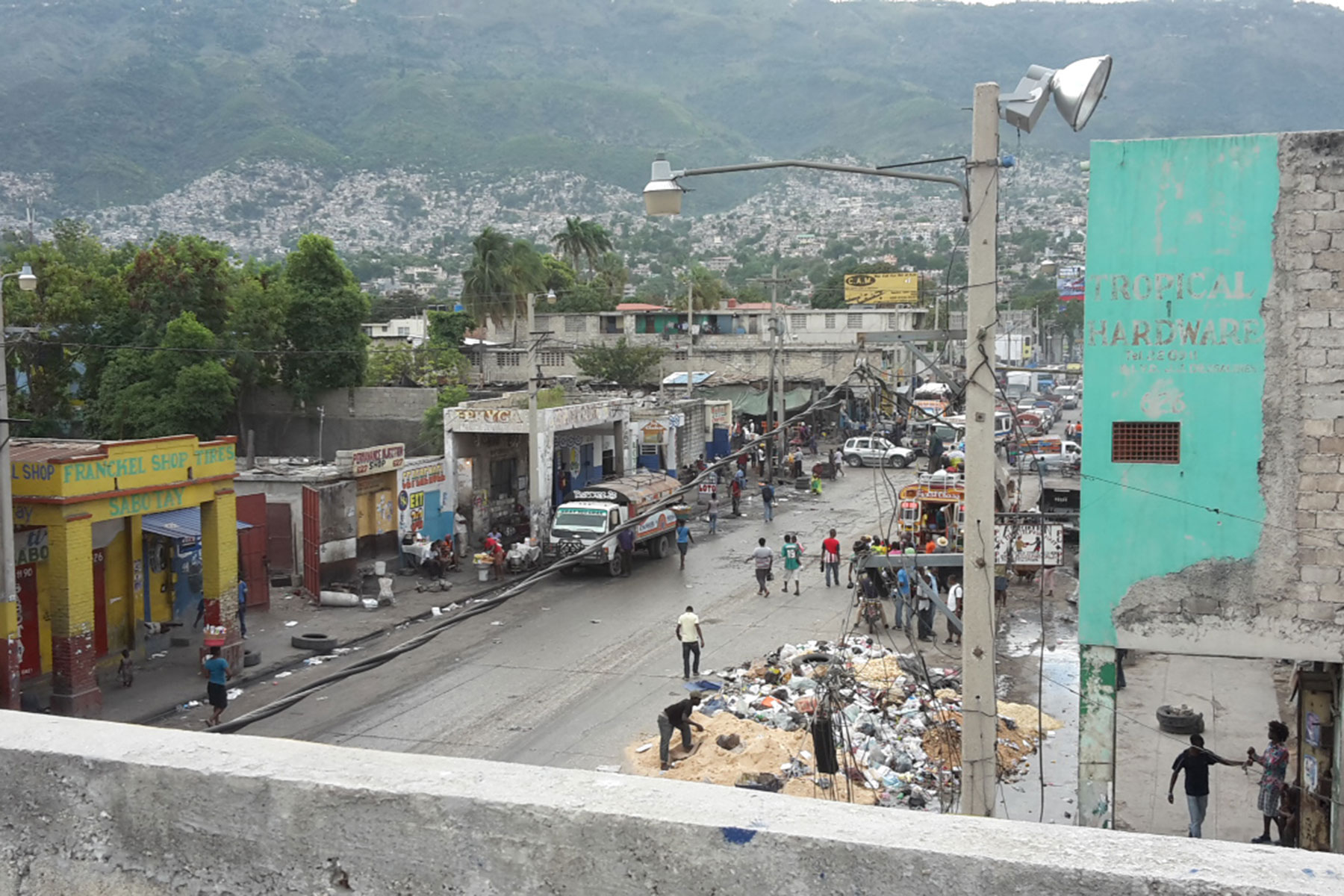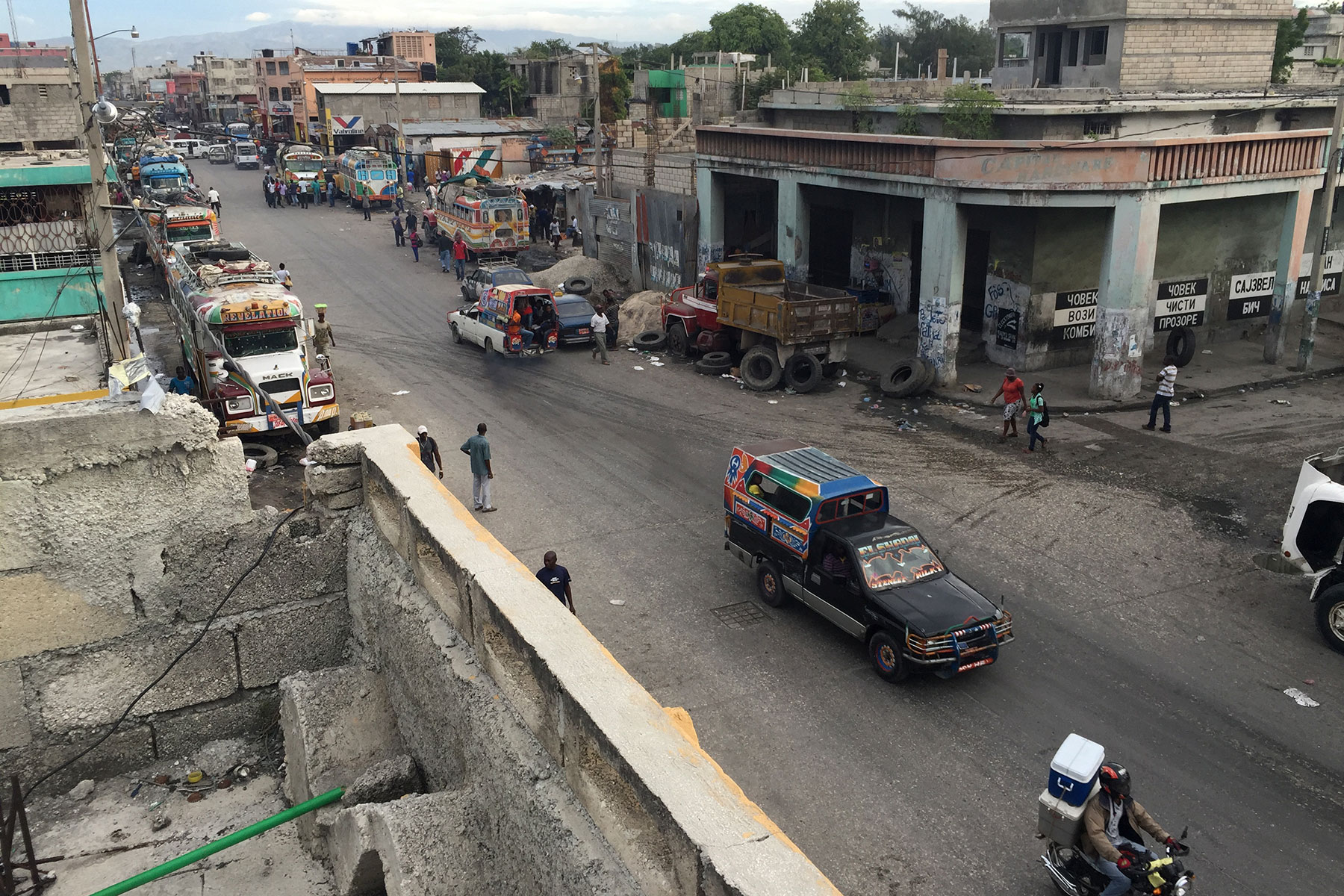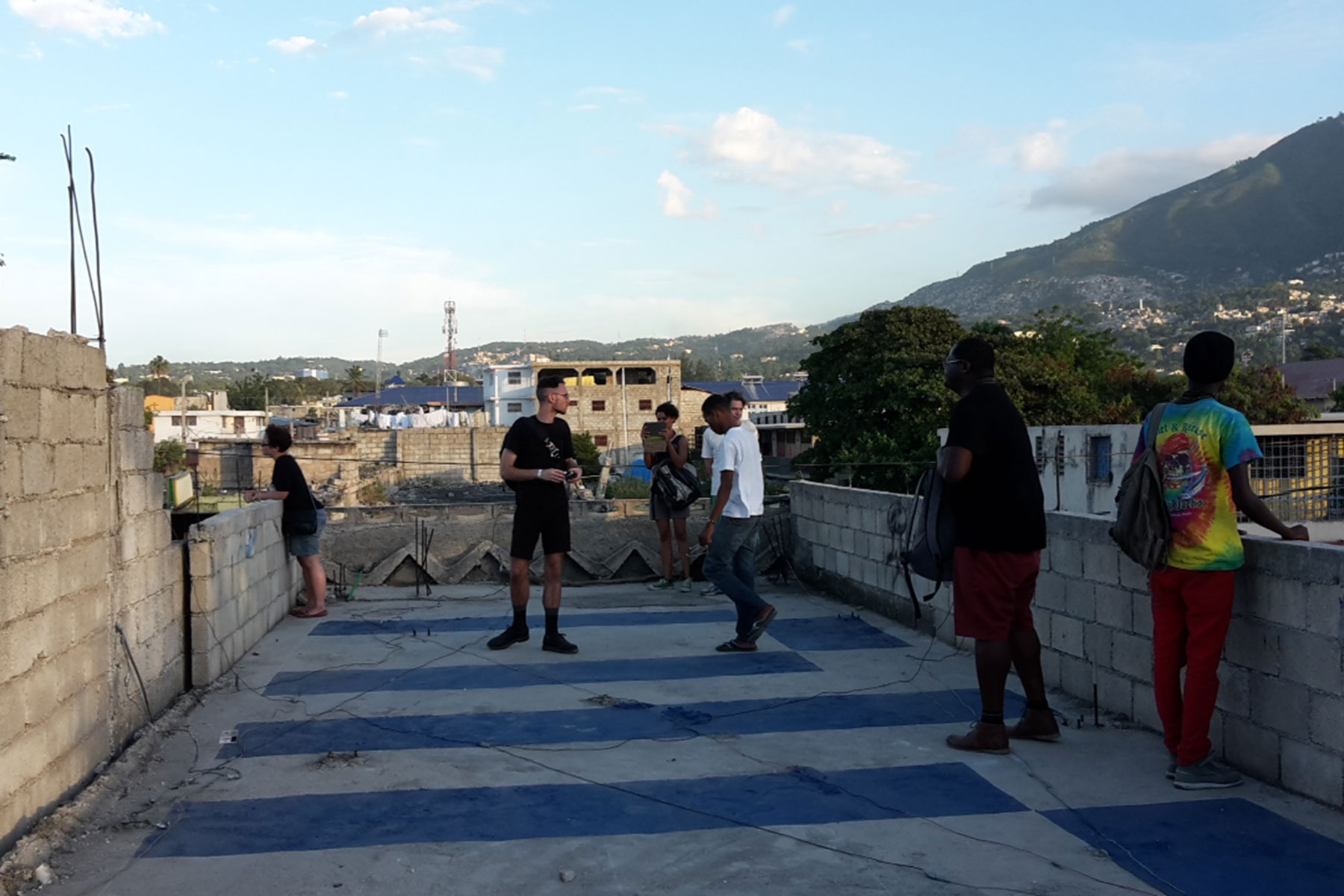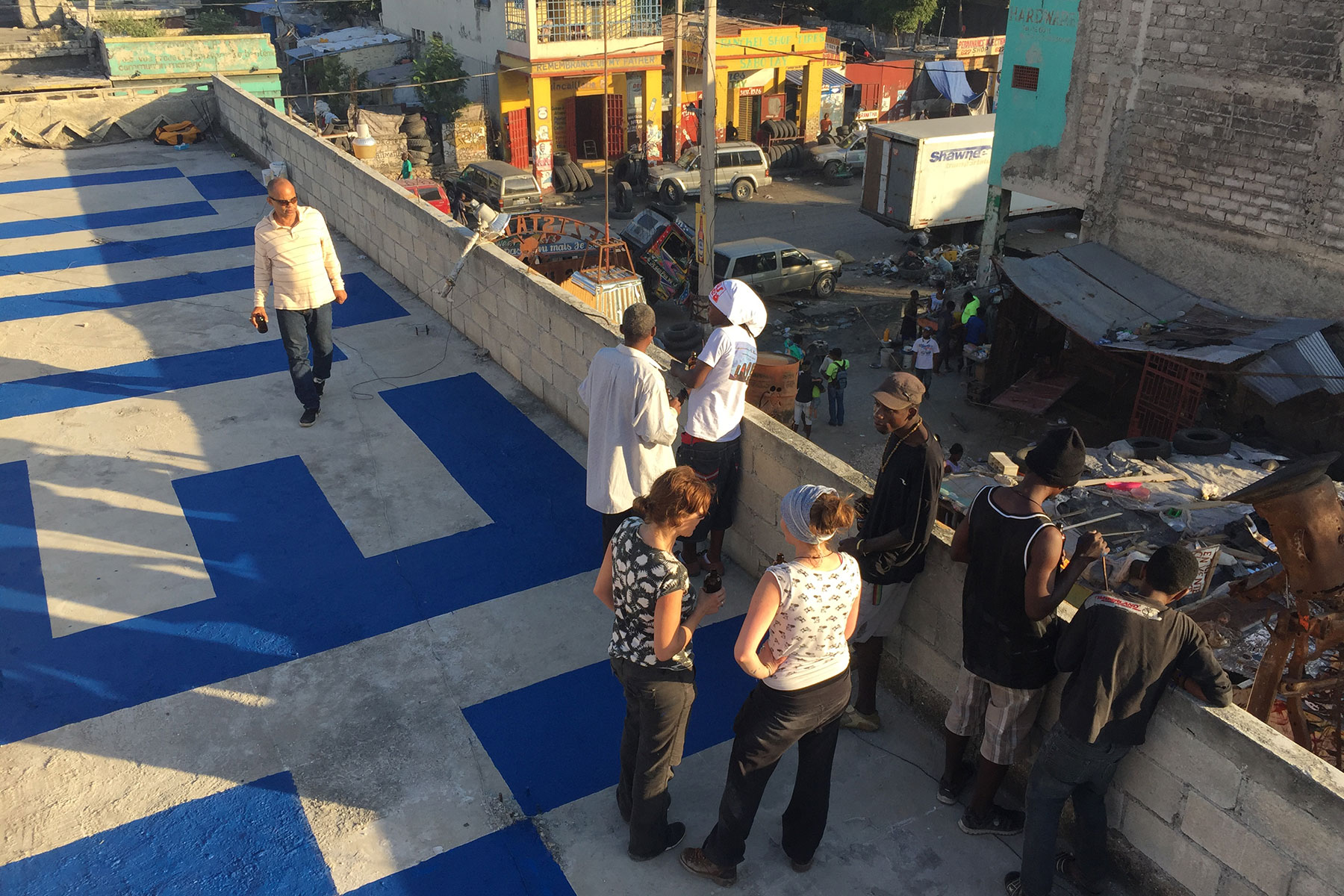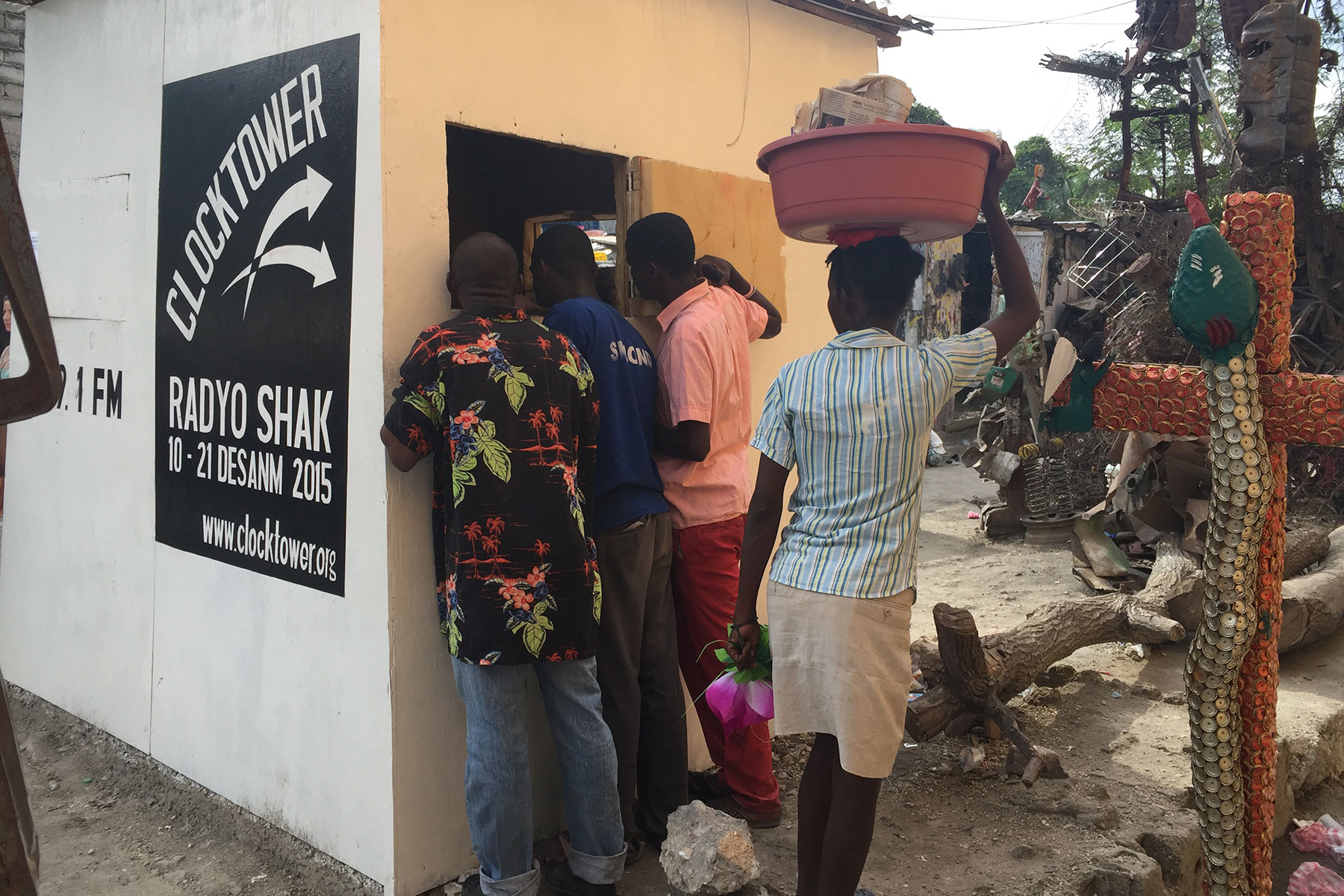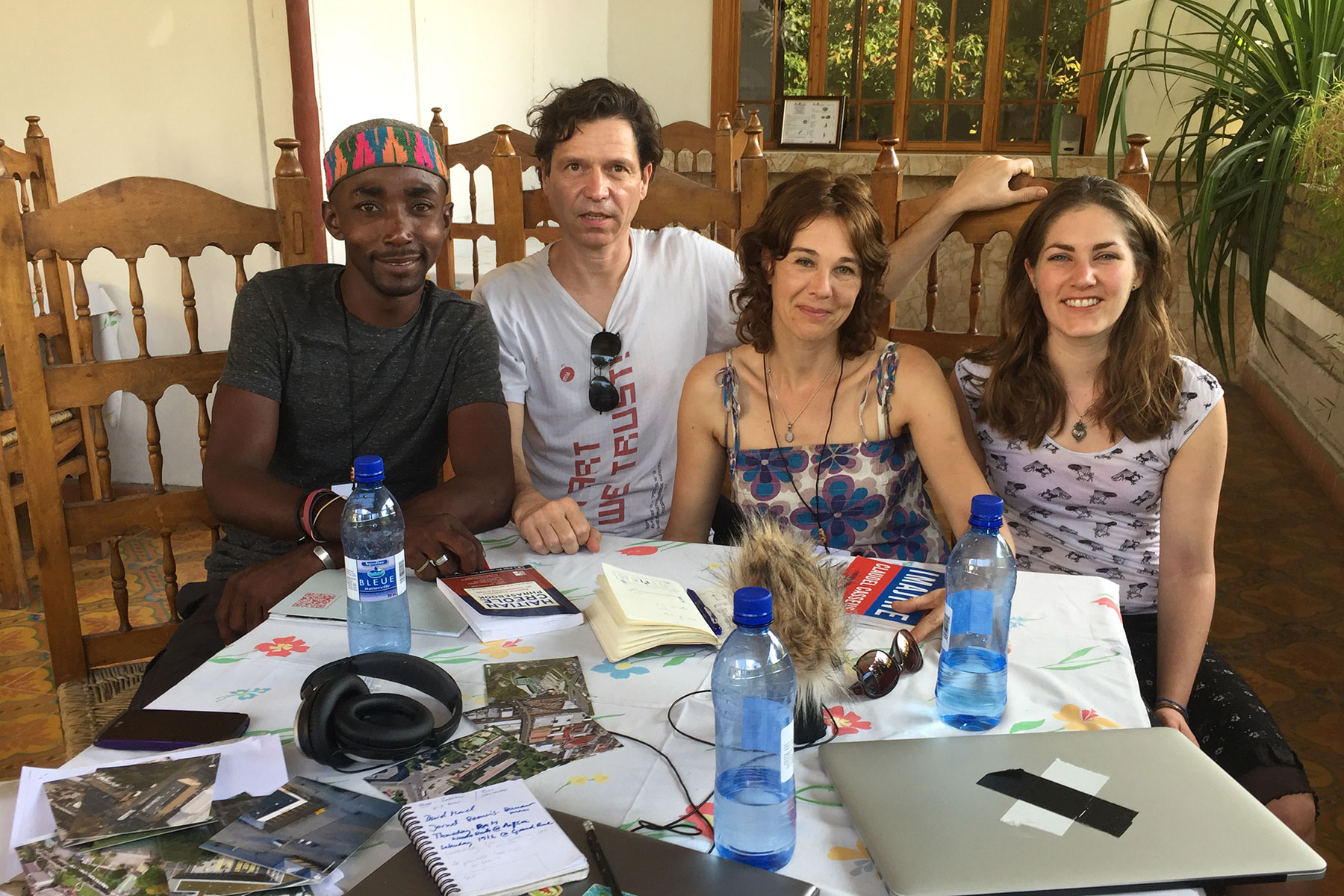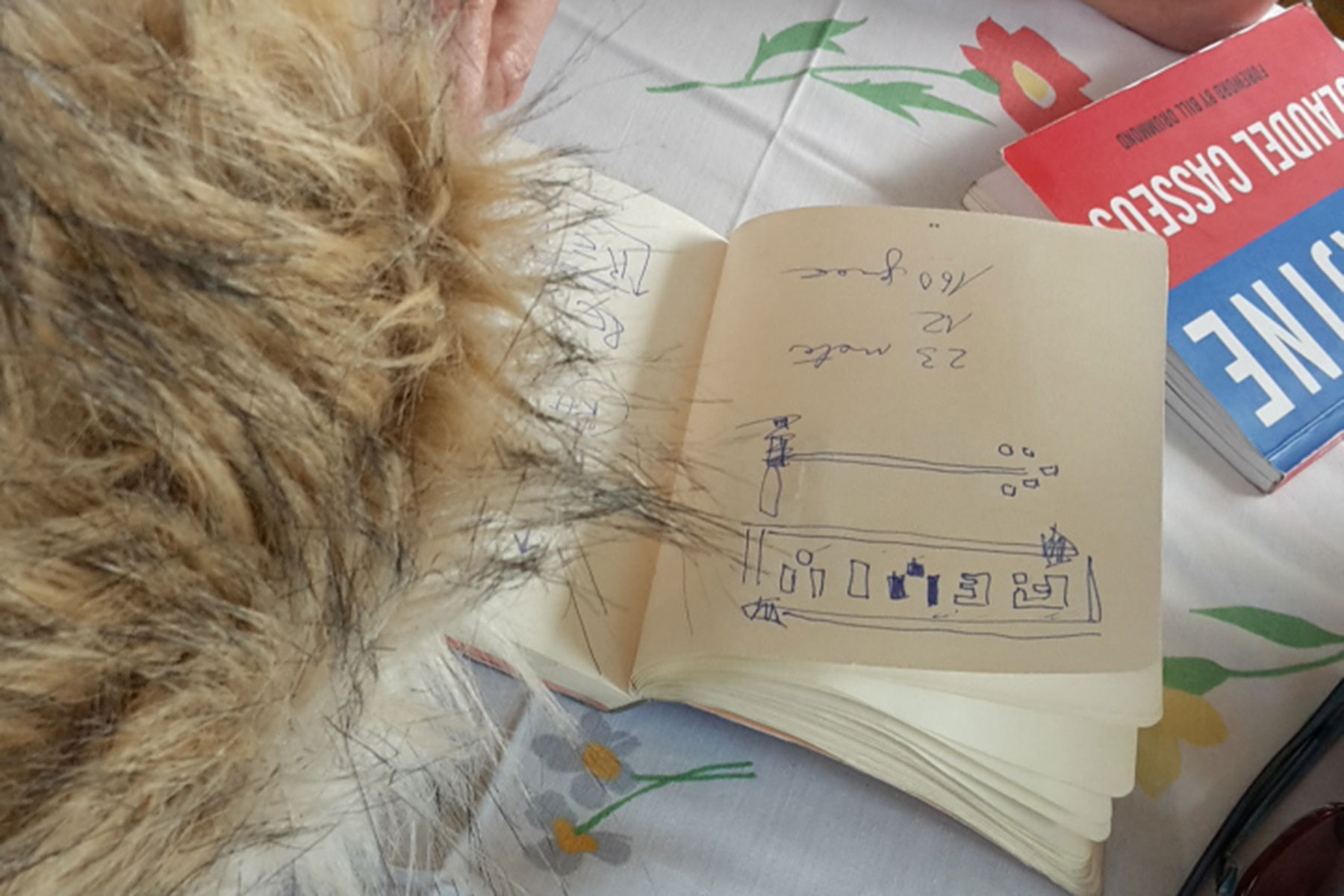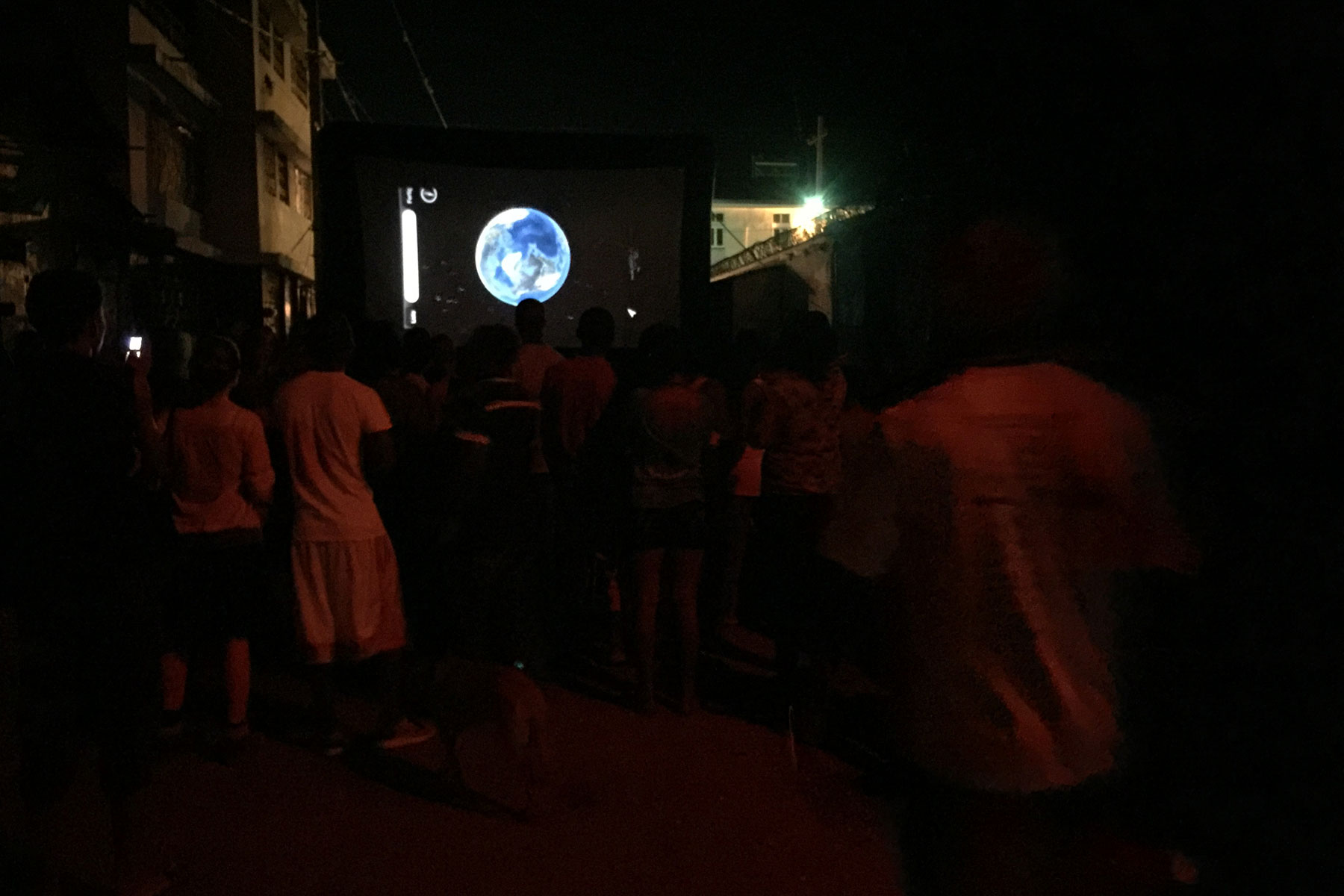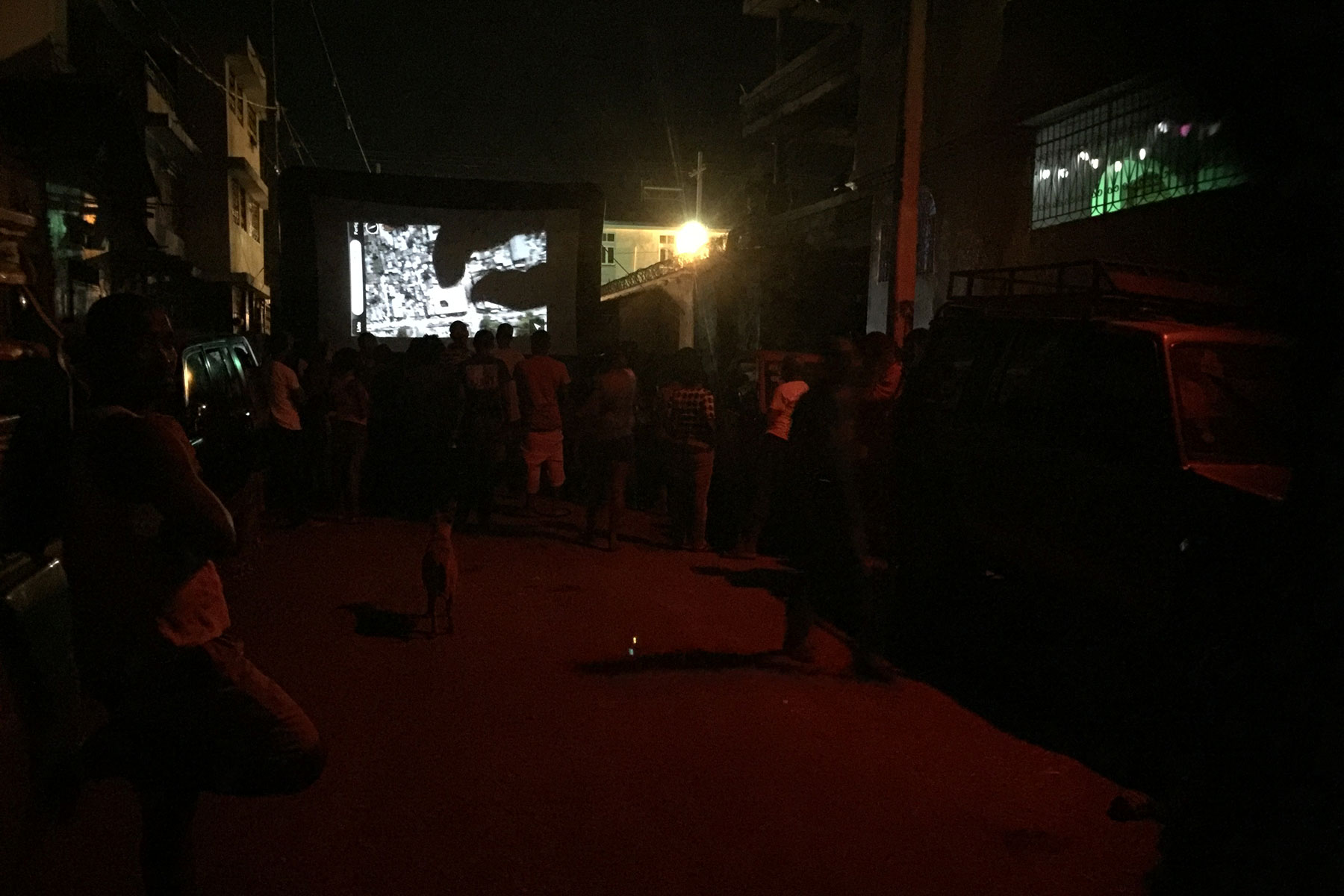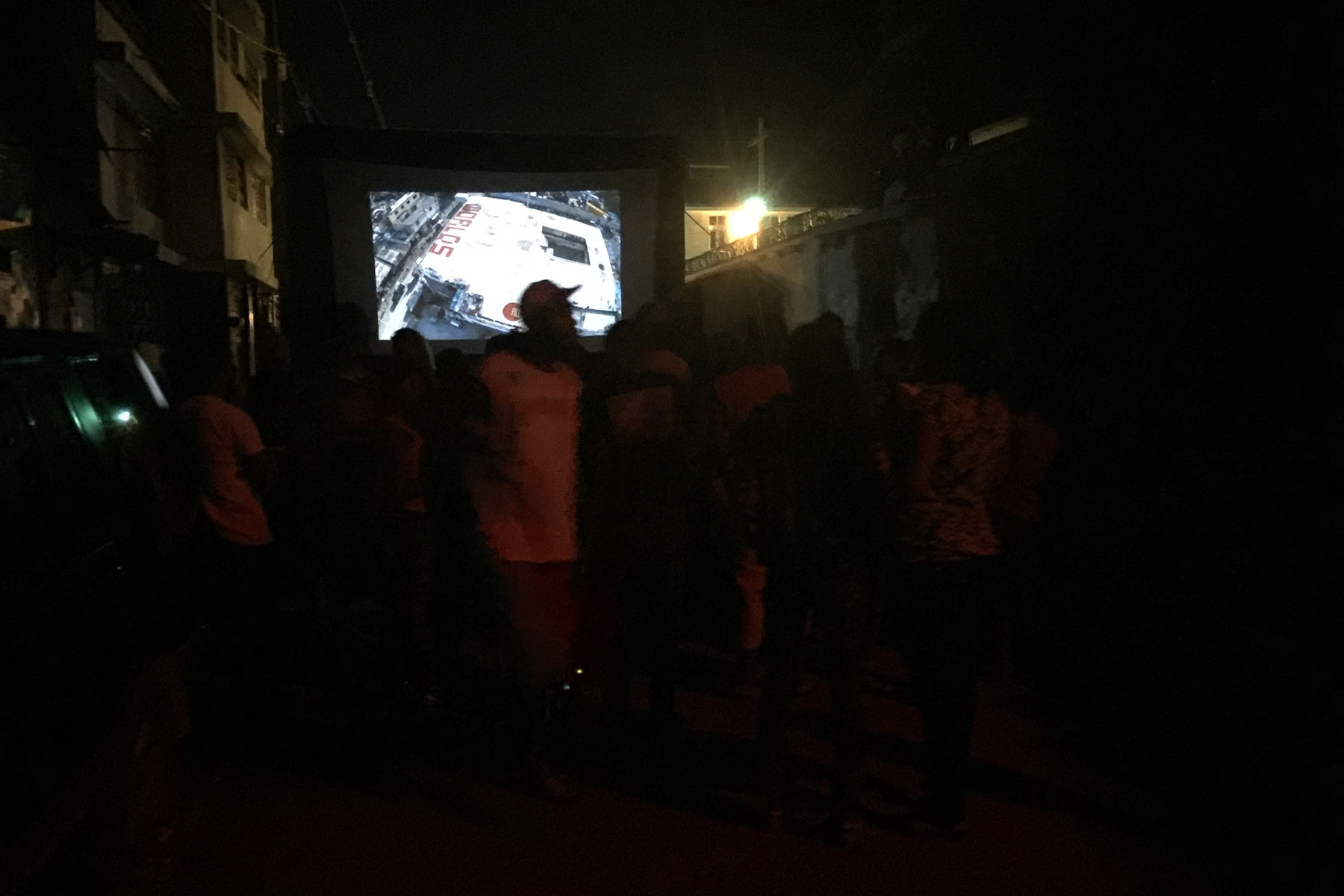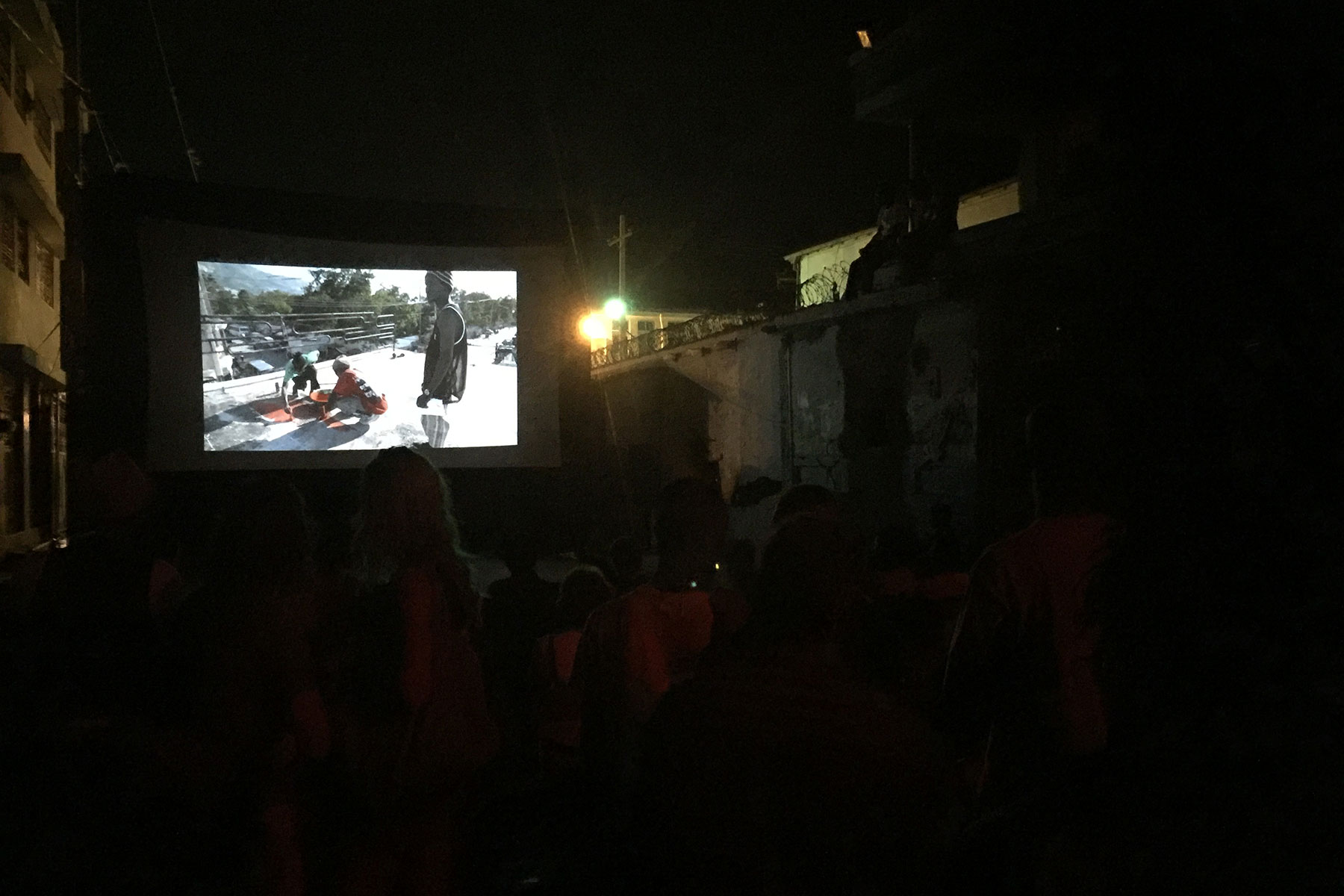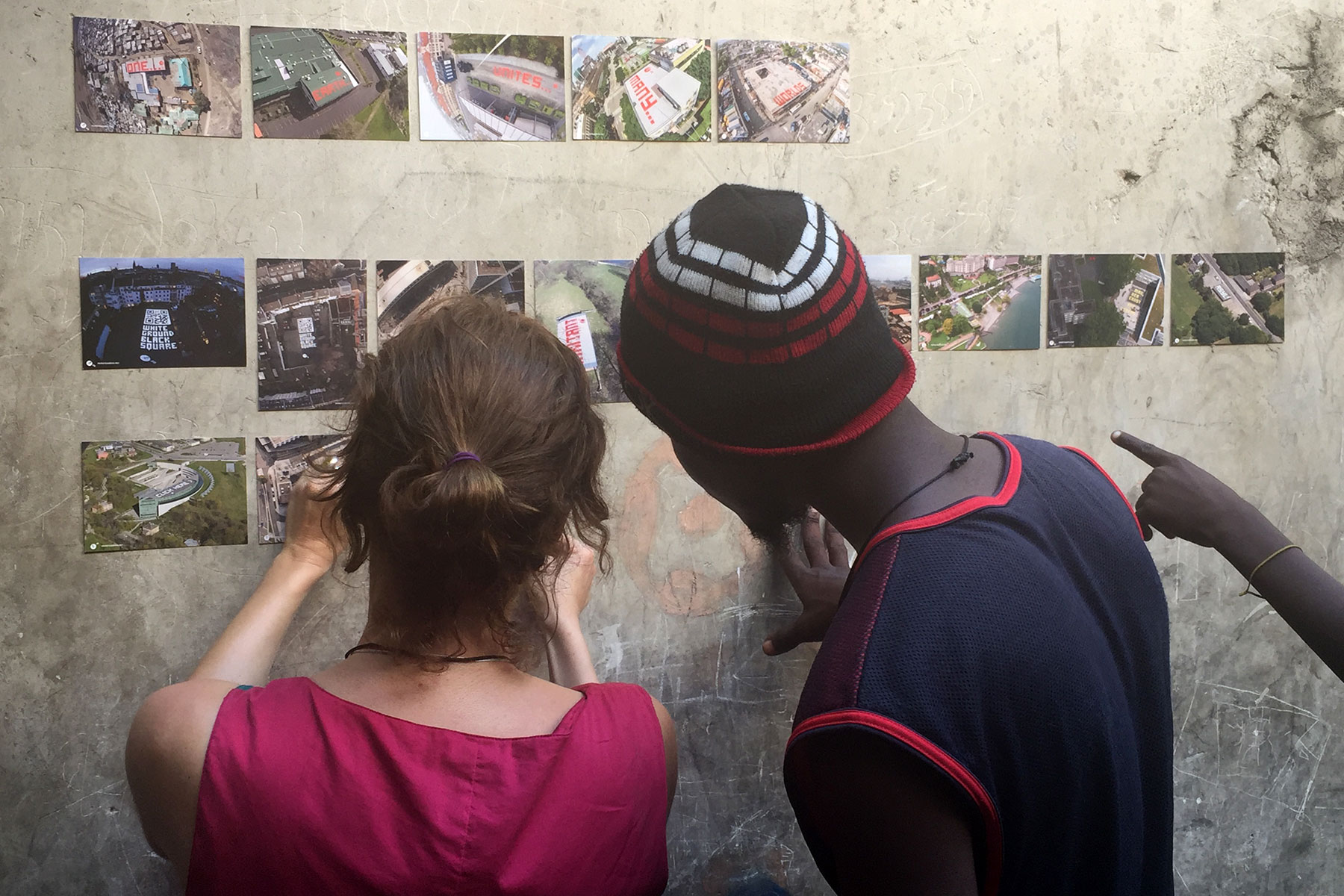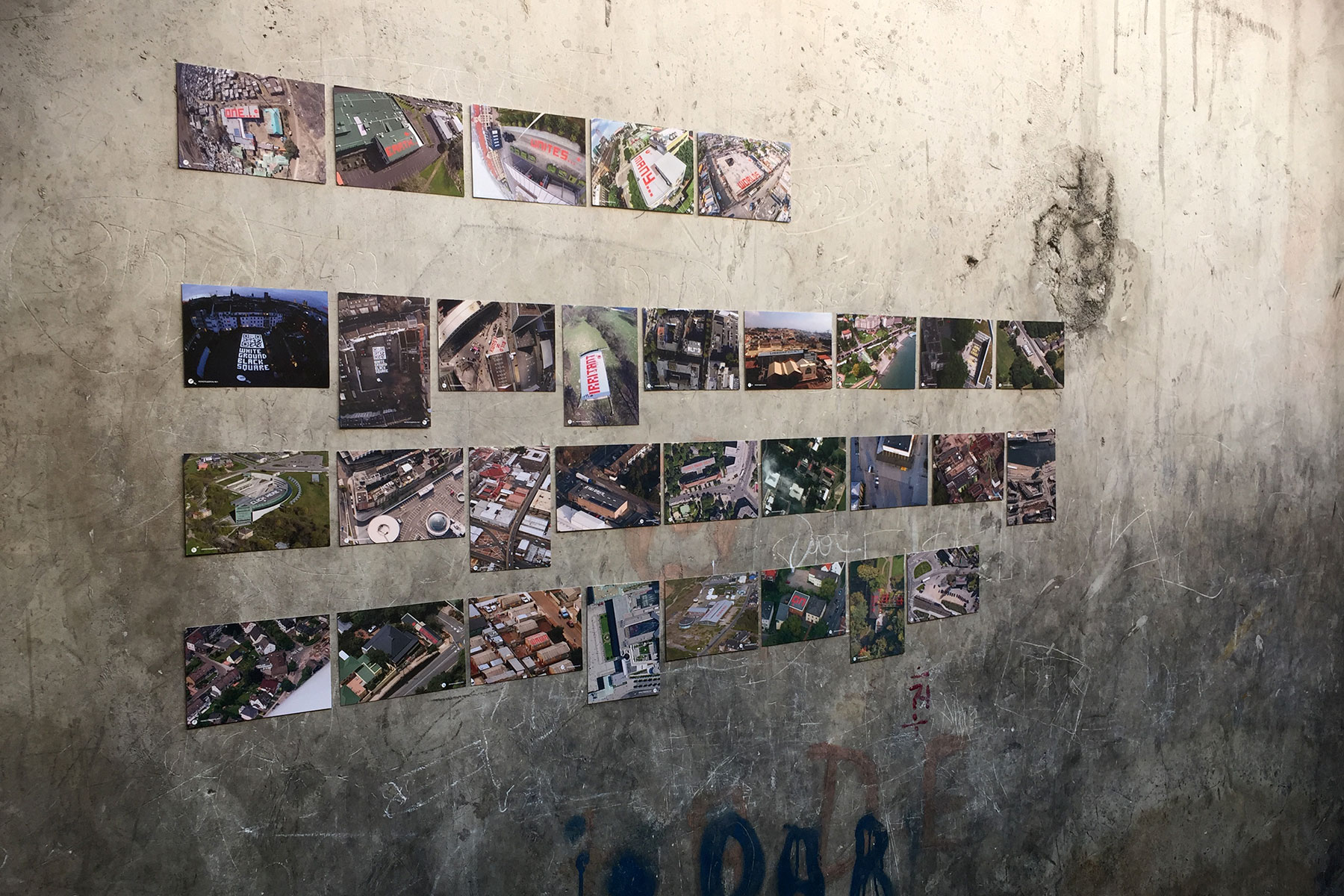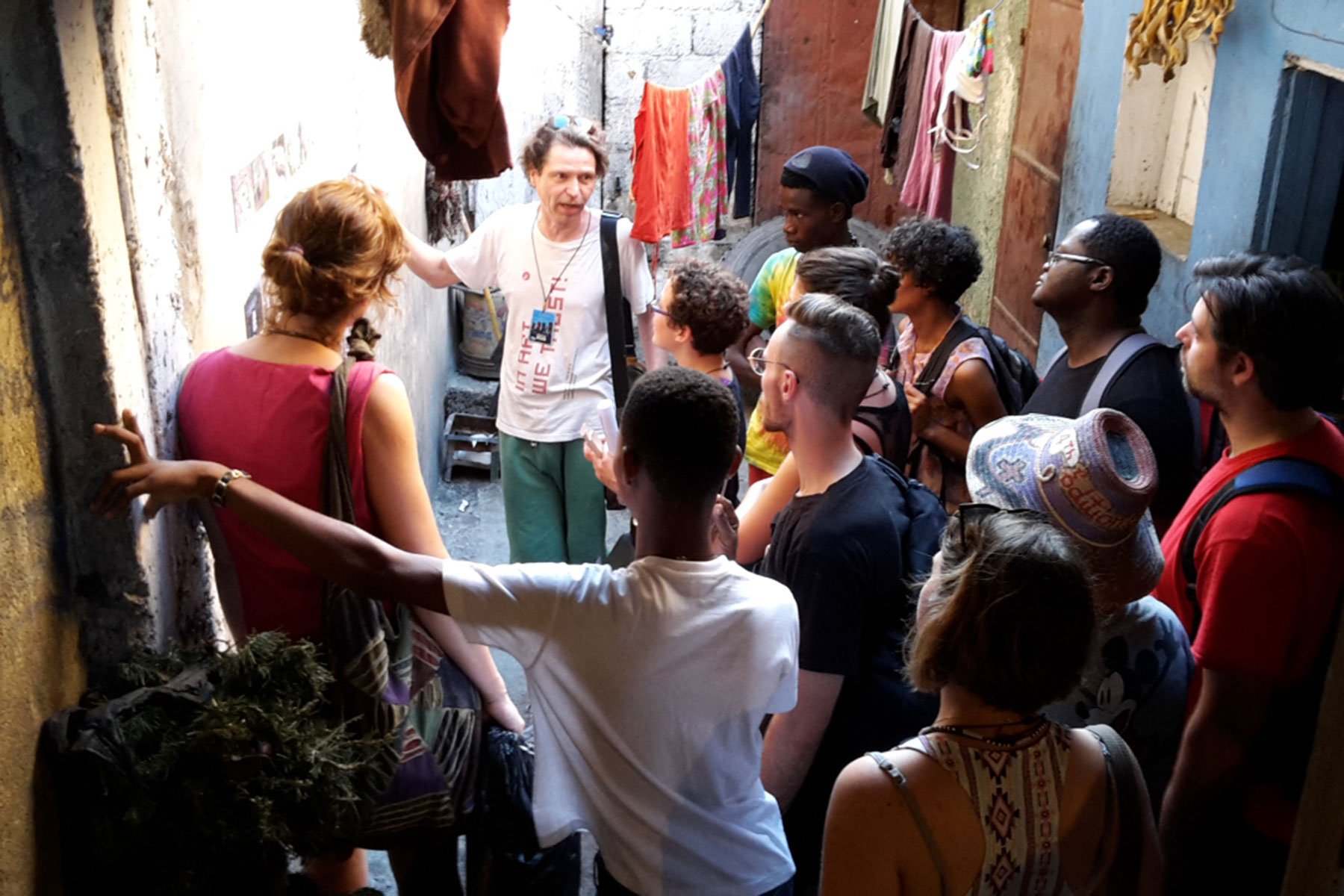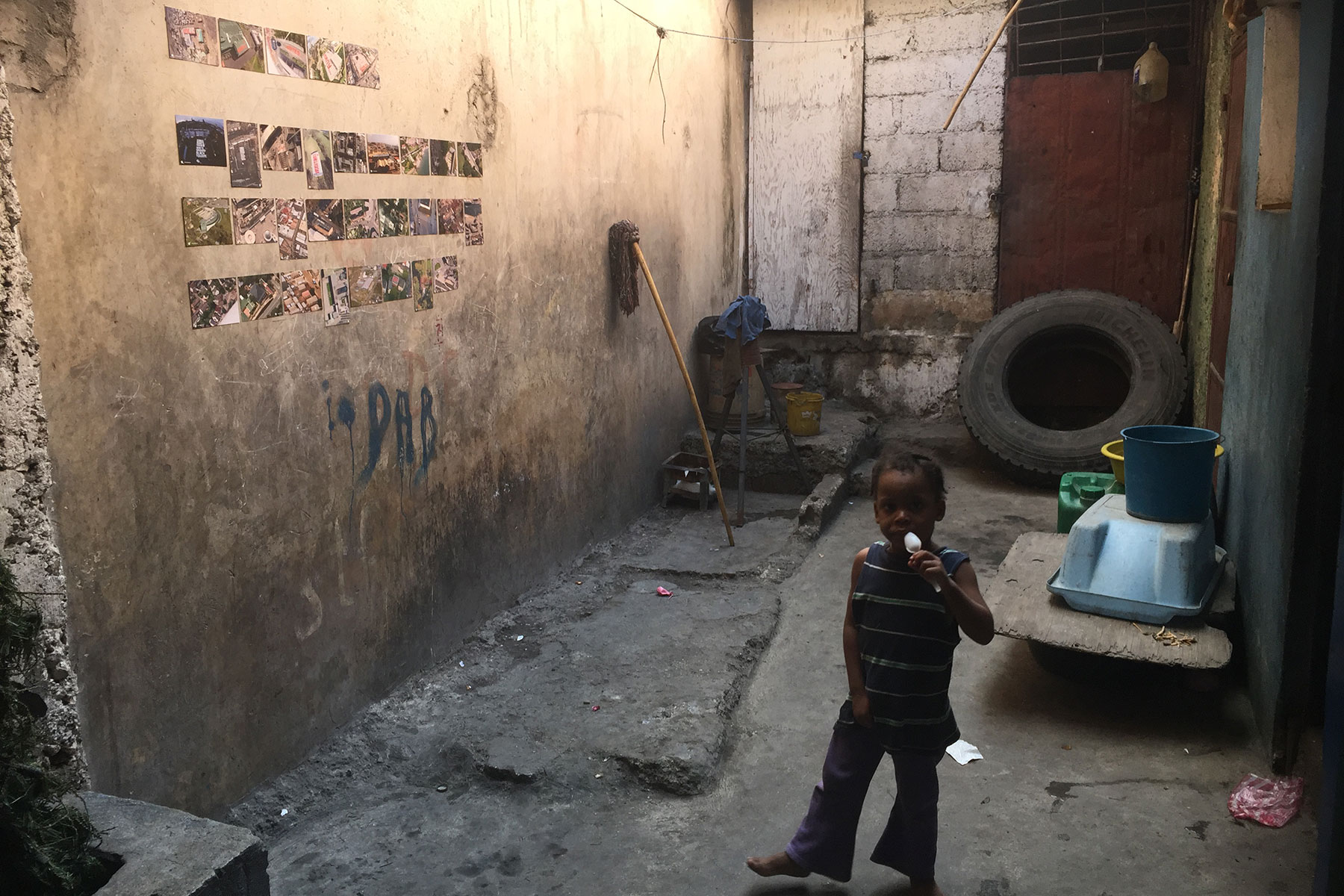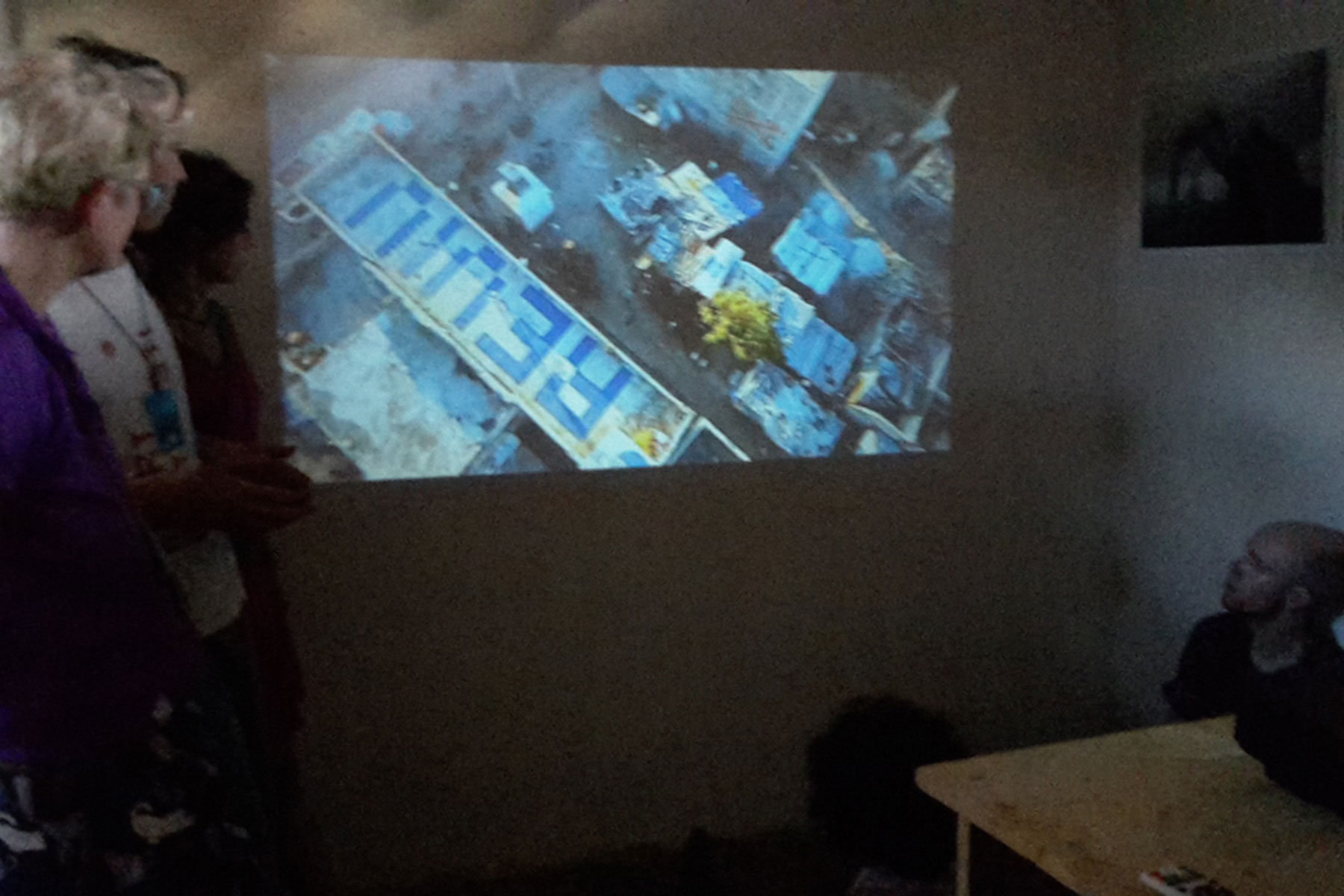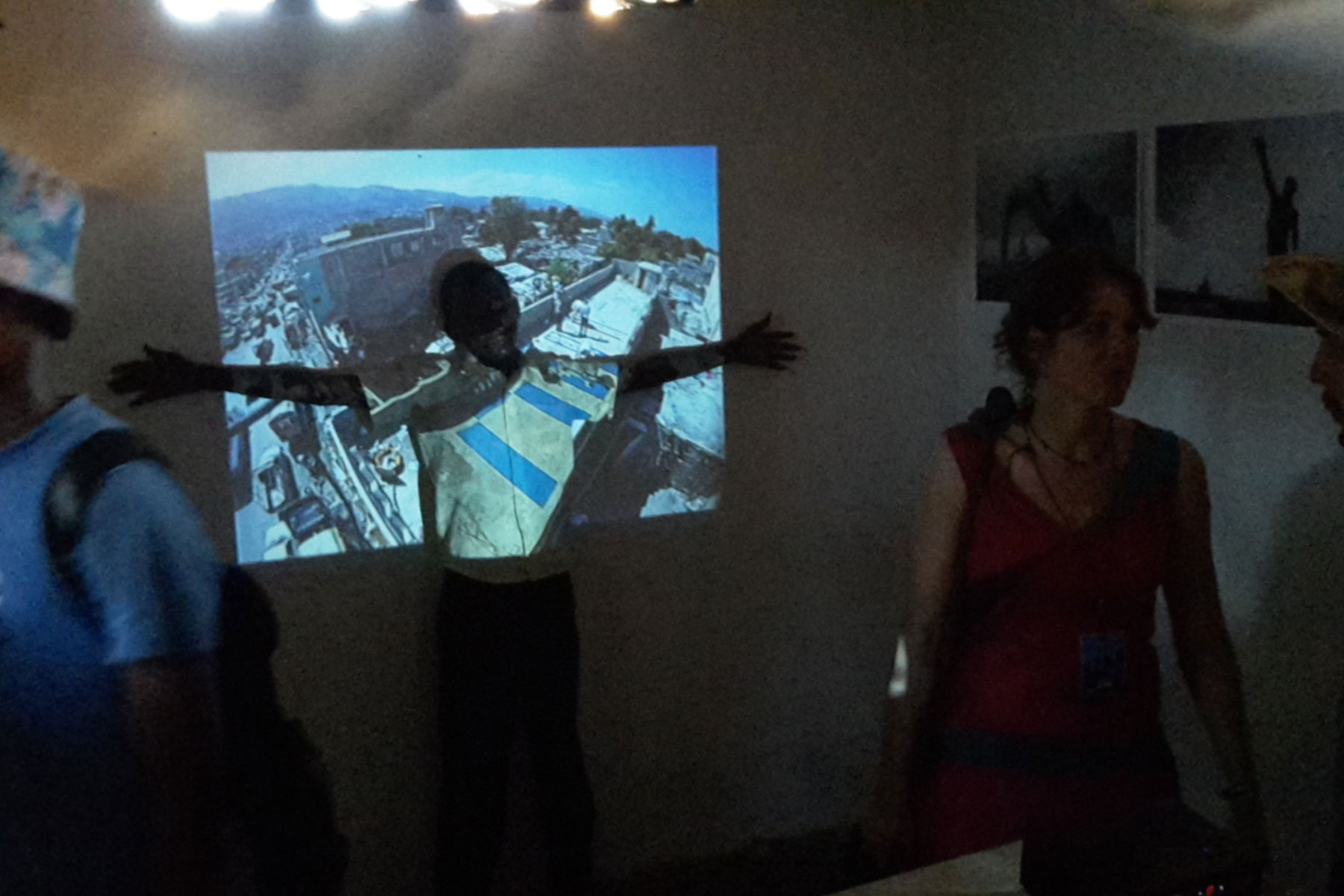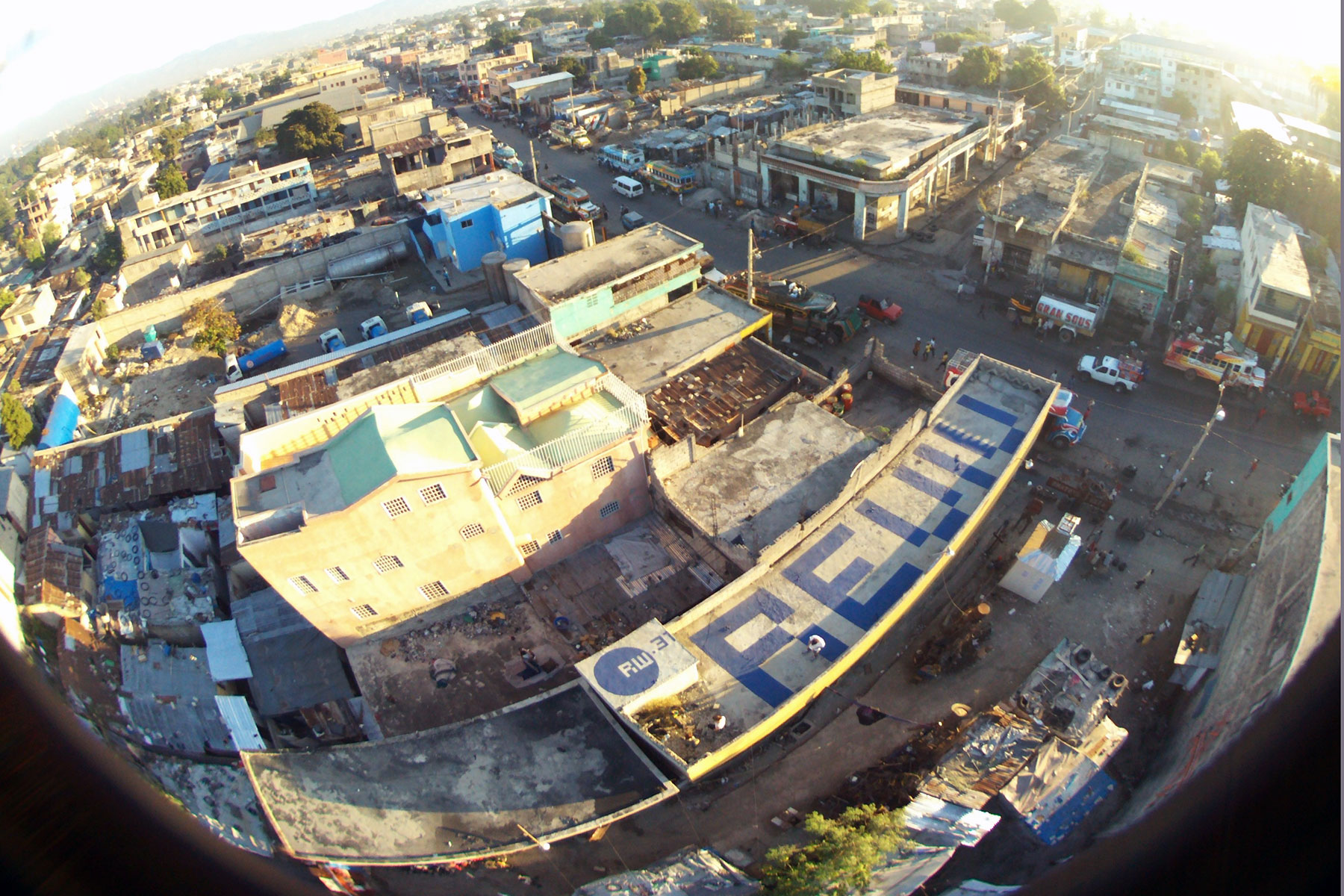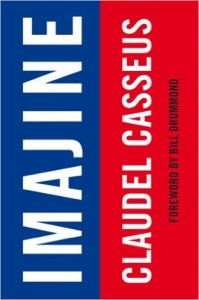For the 4th Ghetto Biennale 2015 – KREYÒL, VODOU and the LAKOU : Forms of Resistance, REMOTEWORDS worked together with the local Haitian writer Claudel Casseus who is a member of the artist collective Atis Rezistans. The Kreyól word REVIV translates to revive or rebirth. Atis Rezistans work with used material to create their works: It connects with reincarnation as an important aspect in the local voodoo culture, the lack of money and resources to source proper material as well as to keep their daily environment clean of rubbish. At the same time, REVIV is a call for:
“Let’s start building a new society in Haiti”. (Claudel Casseus, IMAJINE, 2011)
Installed | Location | GPS: 14-12-2015 | Atis Rezistans – 622, Blvd Jean-Jacques Dessalines, Port au Prince, Haiti, 18.5389775,-72.3464261
Author | Words | Curator : Claudel Casseus | REVIV | Leah Gordon and André Eugène, Ghetto Biennale Haiti
Exhibition: 4th Ghetto Biennale 2015
Roof Size | Font Size: 80qm | 4 m x 20 m
On Air: –
Interview
Finding the words for RW.31:
Achim Mohné: One of the ideas that you are talking about in your book is about the poor and the rich people and that now, after the earthquake, they were all “in the same boat”. “We are all kind of equal”, you write. We think that’s an interesting topic to talk about here in Port au Prince, or in Haiti, to find a message for our roof. Maybe you can tell us something about the situation today, almost 6 years after the disaster. For example, something related to the building we can use for an inscription close to the Grand Rue, the Tropical Hardware Store. Do you know anything about the history of this building and the circumstances?
Claudel Casseus: It was a store for tools and hardware. It has been ever since. After the earthquake, it was not anymore, it was done. The owners were ‘bourgeois’, rich people living in Pétionville. They came down every morning to sell something and in the afternoon, they went back up the hill. Meanwhile, there are not a lot of bourgeois anymore at the Grand Rue. Before, there were a lot of them having a business or a shop in the centre close to the Grand Rue. After the earthquake, they suddenly left and the trade was over. Meanwhile, all the business, especially the big business, takes place in Pétionville. This happened to most of the businesses, like the Tropical Hardware store. These shops disappeared.
Uta Kopp: Your community here, especially the “Atis Rezistans”, is very strong. How changed the function and the importance for the community? Whether today, one works more or less together than before.
CC: For the Atis Rezistans, a lot changed. In a way, one also sees the Atiz Rezistans, to ‘resist’ a lot of obstacles. Also, now we receive a lot more of foreign visitors than before the earthquake. Therefore, the Atis learned to exchange and to communicate better with others from abroad.
UK/AM: We noticed that you work with recycled material. We liked, that as an artist you work with the recycled material. This is not so common in the Western world. Some artists do, but only a few. Usually, they go to the shop and buy there materials because they can afford it. But your art is different. And we were thinking about this idea also of ‘recycling’ stuff and rebuilding stuff out of nothing.
CC: The reason why we try this is because the Grand Rue is a very dirty place. So we try to tell the people: We can do another thing! Don’t put the trash on the street. We try and we try and we try. But all the time, they burn. When we got a political situation, they burn tires on the street. We know it’s not good for the nature, for the kids. We try to use the tires so they are away from the streets. We try to explain them – we can do another thing with the tires. A positive thing. Burning the tires is not good for us. Don’t do that again. So that’s the reason we try to recycle everything we find in the streets, to give it a new life.
AM: There are two interesting things: first, the way you use the material. Like in a circle, things become precious again. You take the trash and you make it precious through artistic input. That’s a great thing. In the same time, it is an environmental problem: trash. We have the same problem in Germany. We have radioactive trash and you have normal trash – in a way we have kind of the same problem, but different. Also, what we talked about before, the building situation is very special because the whole area now is changed and has to be re-used, recycled somehow to give it a new meaning and purpose, a new life. This is something that is also visible in the Atis Rezistans area.
CC: I think it’s a good idea if we choose this word: REBORN. Maybe in Kréyol? In Kréyol it is REVIV.
UK: I also think it’s good, it’s positive.
CC: It has a lot of energy. You know, after the earthquake, we tried to get a new life. With most energy. It’s like REVIV. Also it is important in the Voodoo, because, like Guédé, if some people would die, and then the spirit of these people come. Guédé is something like reborn.
AM: Also, it is a little bit like survival.
CC: Because, for us, all the people were dying in the earthquake. And then we tried to have a new power to survive, to reborn.
AM: This is also, what you said in your book a few times – I think you even end your book with it: “Let’s start thinking about building a new society in Haiti”.
CC: Yes, “An nou repanse pou haiti e yon nouvo sosyete”.
_________________
UK: But don’t we need to ask somebody to use the roof?
CC: No, nonono.
AM: We just do it?
CC: Yes, we just do it.
Author
In 2011 Claudel Casseus published the book IMAJINE about the earth quake in Port au Prince.
IMAJINE, Penkiln Burn
Exhibition
Institution
Atis Rezistans, Port au Prince, Haiti
